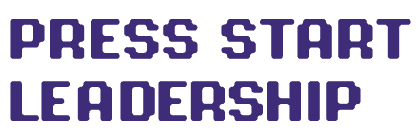Connecting Talents and Elevating Voices: How Game Industry Leaders Can Foster Growth and Recognition
In the dynamic realm of the video game industry, leadership transcends beyond managing teams and projects. It involves playing a dual role – being both a bridge and a pedestal. This comprehensive article explores how leaders in the video game industry can act as bridges, facilitating connections and providing constructive feedback, and as pedestals, highlighting accomplishments and giving a voice to the underrepresented. By embracing these roles, leaders can create an environment that not only drives the industry forward but also fosters a culture of growth, inclusion, and recognition.
Leaders as Bridges – Making Connections in the Industry
The Power of Networking: In the video game industry, networking is a critical tool for success. Leaders can act as bridges, connecting team members with other professionals, mentors, and opportunities. This networking can take various forms, from informal introductions to organizing networking events or mentorship programs.
Facilitating Collaborative Opportunities: Leaders can identify and create opportunities for collaboration both within and outside their organizations. This might involve cross-departmental projects, collaborations with other studios, or partnerships with technology providers, amplifying the creative and technical capabilities of their teams.
Constructive Feedback as a Bridge to Career Advancement
The Art of Actionable Feedback: Providing feedback that is specific, actionable, and constructive is essential for career growth. Leaders should focus on delivering feedback that guides team members on how to improve and advance to the next level.
Regular One-on-Ones and Performance Reviews: Implementing regular one-on-one meetings and detailed performance reviews can help in understanding individual career aspirations and offering tailored advice and support. This approach ensures that feedback is consistent, personalized, and aligned with long-term career goals.
Creating a Culture of Continuous Learning
Encouraging Skill Development: Leaders should foster an environment where continuous learning and skill development are prioritized. This can be achieved by providing access to training programs, workshops, and industry conferences.
Sharing Industry Insights and Trends: Keeping the team informed about the latest industry trends, technological advancements, and market dynamics is crucial. Leaders can organize knowledge-sharing sessions or create internal forums for discussing industry news and insights.
Leaders as Pedestals – Recognizing and Elevating Team Achievements
Celebrating Success: Acknowledging and celebrating the achievements of team members and projects is vital for morale and motivation. Leaders should create platforms, both internal and external, to highlight these successes.
Awards and Recognition Programs: Developing a formal recognition program can be an effective way to celebrate accomplishments. This could range from employee of the month awards to showcasing outstanding work in company newsletters or social media.
Giving a Voice to the Voiceless
Fostering an Inclusive Environment: Leaders must ensure that all team members, regardless of their background or position, have the opportunity to be heard. This includes actively seeking input from quieter or less represented team members during meetings and decision-making processes.
Advocating for Diversity and Inclusion: Taking a stand on diversity and inclusion issues and implementing policies that promote a more inclusive workplace is another way leaders can be pedestals. This involves addressing any biases in hiring practices, promoting diverse talent, and creating a safe and respectful work environment for all.
Leading by Example – The Impact of Authentic Leadership
Demonstrating the Values: Leaders should embody the values of connection, support, and recognition they wish to see in their teams. This means actively participating in networking and mentorship, offering constructive feedback, and acknowledging the efforts of others.
Transparency and Open Communication: Maintaining transparency in decision-making and communication reinforces trust and respect. Leaders should be open about their processes, decisions, and the reasons behind them, setting a standard for honest and clear communication within the team.
We have discussed how leaders in the video game industry can be effective bridges and pedestals. By connecting team members with opportunities and providing constructive feedback, leaders can guide career growth and skill development. Simultaneously, by recognizing achievements and advocating for inclusivity, they can create an environment where every team member feels valued and heard. These roles are not just essential for the growth of individuals but are pivotal in driving the industry towards a more collaborative, innovative, and inclusive future.
Continuing our in-depth exploration of the dual roles of leaders in the video game industry as bridges and pedestals, we now turn our focus to sustainable strategies for maintaining these roles, navigating potential challenges, and measuring the impact of such leadership practices on both individuals and the broader organization.
Sustainable Strategies for Being Bridges and Pedestals
Long-Term Mentorship Programs: Developing and sustaining mentorship programs within the organization can be a powerful way for leaders to act as bridges. These programs should be structured to provide ongoing support, guidance, and career development opportunities.
Creating Platforms for Recognition: Establishing regular events or forums where team members’ achievements are showcased can institutionalize the practice of elevating and celebrating successes. These platforms could include internal showcases, press releases, or feature spots on company social media channels.
Navigating Challenges in Leadership Roles
Managing Time and Resources: One of the key challenges in being both a bridge and a pedestal is the efficient management of time and resources. Leaders need to balance these roles with their other responsibilities, ensuring that none are neglected. Prioritizing tasks and delegating appropriately can help in managing these roles effectively.
Ensuring Genuine and Equitable Recognition: Another challenge is ensuring that the recognition and opportunities provided are genuine and equitable. Leaders must be vigilant against biases and favoritism, ensuring that all team members have equal access to growth opportunities and recognition.
Fostering Open Communication and Feedback
Encouraging Two-way Communication: Creating an environment where team members feel comfortable providing feedback to leaders about their management and leadership style is essential. This two-way communication can provide valuable insights into the effectiveness of the leader’s role as both a bridge and a pedestal.
Regular Check-ins and Surveys: Implementing regular check-ins and conducting anonymous surveys can help leaders gauge the effectiveness of their efforts in fostering growth and recognition within the team.
Measuring the Impact of Leadership Practices
Setting Measurable Goals: Leaders should set clear, measurable goals related to their roles as bridges and pedestals. These could include the number of mentorship interactions, the frequency of recognition events, and team satisfaction ratings.
Analyzing Team Performance and Growth: Evaluating the impact of these leadership practices can be done by analyzing team performance metrics, growth in individual team members’ careers, and overall team satisfaction and engagement levels.
Leading with Flexibility and Adaptability
Adapting to Individual Needs: Recognizing that each team member has unique needs and aspirations is crucial. Leaders should be flexible in their approach, tailoring their support and recognition strategies to suit individual team members.
Staying Responsive to Industry Changes: The video game industry is dynamic and fast-paced. Leaders must stay responsive to changes within the industry, adapting their strategies to continue being effective bridges and pedestals in varying circumstances.
Building a Culture of Connectivity and Appreciation
Cultivating an Organizational Culture: Leaders should strive to cultivate a culture within the organization that values connectivity, mutual support, and appreciation. This involves not only individual actions but also embedding these values into the organization’s policies and practices.
Role of Top Management: The commitment of top management to these values is crucial. Their support can provide the necessary resources, visibility, and organizational focus to make these initiatives successful.
Final Thoughts:
Leaders in the video game industry play a crucial role in shaping the careers and experiences of their team members. By acting as bridges, they facilitate connections and growth opportunities, and as pedestals, they elevate and celebrate the achievements and voices of their team members. These roles require a balance of empathy, strategic thinking, and commitment to the long-term development of both individuals and the organization.
In embracing these roles, leaders not only contribute to the professional growth of their team members but also drive forward the video game industry as a whole. The future of game development is not just in the technology or creative content but also in the cultivation of talent and the fostering of an inclusive, supportive work environment. Leaders who can effectively bridge gaps and elevate their teams are not only successful in their right but also pivotal in ushering in a new era of game development marked by innovation, inclusivity, and collaboration.
Thank you for reading this article to the end. I hope it has been informative and helpful. If you’d like to learn more about the topics we covered, I invite you to check out my podcast and my YouTube channel where I delve into these subjects in more depth.
Additionally, I would love to stay in touch and keep you updated on all the latest developments and insights in the world of leadership. That’s why I encourage you to sign up for my newsletter. Not only will you receive regular updates, but as a thank you for joining, I will also send you my free eBook, “5 Heroic Leadership Skills.” This eBook is packed with practical tips and strategies that will help you take your leadership skills to the next level.
So don’t wait! Sign up for my newsletter today and start your journey towards becoming a more effective and inspiring leader. I can’t wait to hear from you.
Work With Me!
If you’re on the quest to elevate your team’s leadership, production, or game design capabilities, I’m here to assist! Leveraging extensive experience and a strategic approach, I offer personalized audits, bespoke workshops, and leadership retreat facilitation to drive your team toward excellence. My commitment is to provide efficient, reliable, and proven support, ensuring you have the tools and insights needed to thrive. Ready to unlock your team’s full potential and achieve unparalleled success? Don’t hesitate—Press Start on your journey to transformation today! Feel free to reach out directly to discuss how we can tailor a solution to meet your unique needs and goals. Let’s connect and take your team’s performance to the next level!
🔗 www.pressstartleadership.com
📧 contact@pressstartleadership.com





